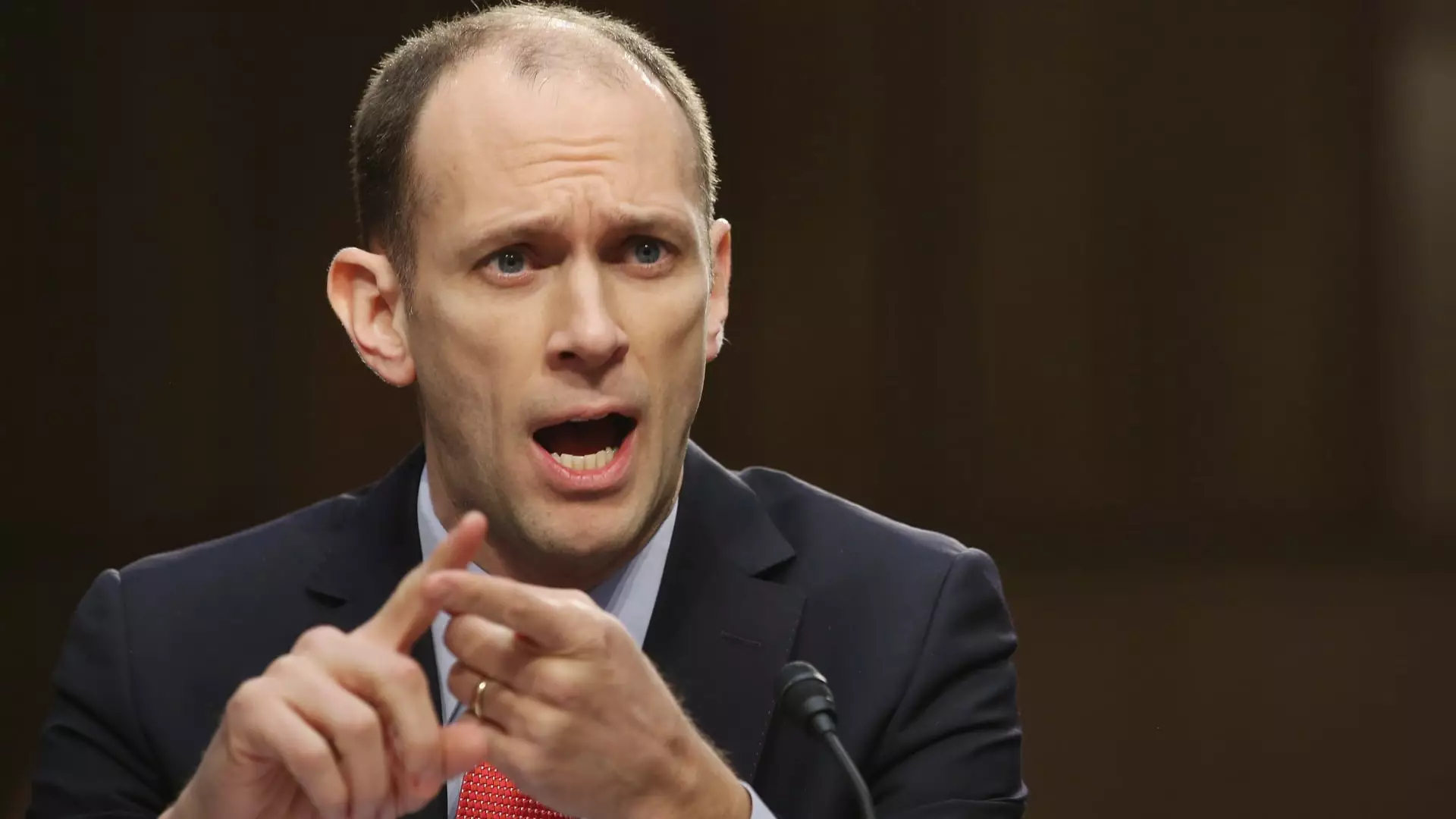As the world grapples with a series of economic tensions, the remarks from Chicago Federal Reserve President Austan Goolsbee reveal a complex and nuanced approach to monetary policy. Despite signaling an openness to interest rate cuts in the near future, Goolsbee’s caution stems from a growing wave of uncertainty that has gripped the business community. As he conversed with corporations and local leaders, the sentiment was clear: concerns about tariffs loom ominously, casting a shadow over capital investment and growth prospects.
Reflecting on Goolsbee’s assertion that uncertainty permeates discussions among business leaders, one can observe a noticeable shift from the previous optimism that characterized economic conversations. Firms are not just re-evaluating their plans but also abruptly pausing projects, especially capital expenditures. This collective hesitation suggests that businesses are bracing themselves for potential bumps in the road rather than charging ahead with confidence. It raises the question: Are we witnessing a temporary lull driven by apprehension, or is this a sign of a deeper malaise?
Economic Reality: The Duality of Growth and Inflation
Two significant factors dominate the current economic discourse: inflation levels and growth trajectories. Goolsbee’s confidence in future rate cuts is predicated on his expectation that inflation will be managed in the long term. However, the reality remains that inflation is stubbornly high, with recent statistics reflecting levels in the vicinity of two percent. To a layman, this might seem acceptable, but coupled with rising production costs driven by tariffs, the situation becomes perilous.
The message from Goolsbee and New York Fed President John Williams is couched within layers of economic jargon, but the underlying message resonates clearly: the fear of stagflation—a stagnant economy married to rising prices—should not be brushed aside. Stagflation is not merely an academic concern; it carries significant societal implications, exacerbating inequality and feeding into a cycle of despair. Williams’ acknowledgment of “mixed signals” sends a stark reminder that the road ahead is fraught with risks.
The Political Undertones and Policy Implications
Embedded within the narrative of monetary policy is a potent political subtext. The conversation surrounding tariffs, deregulation, and fiscal policy is not merely a backdrop; it’s the very fabric of how economic policies are crafted and executed in a divided political landscape. Businesses are acutely aware that decisions originating from the Oval Office directly influence their operational realities. As tariffs threaten to raise prices, the need for effective communication between policymakers and business leaders becomes imperative, more so in a climate tinged with uncertainty and animosity.
Goolsbee’s reflections on the conversations with civic leaders and business entities evoke a chilling sentiment. As discussions become more laced with anxiety, it’s evident that the political machinations at play are affecting the foundational aspects of economic health. If business leaders are forced to contend with an unpredictable policy environment, this can stymie growth for years to come.
The Market’s Response: A Divergence from Fed Projections
Perhaps one of the most intriguing aspects of Goolsbee’s commentary and the broader economic landscape is the divergence between Fed policymakers’ projections and market expectations. The Federal Open Market Committee (FOMC) suggests a cautious approach, forecasting two rate cuts through 2025. However, the market appears more aggressive, anticipating three quarter-point reductions. This dissonance signals a rift that should provoke concern.
Market actors often view the Fed as a stabilizing force, yet a substantial disconnect undermines that perception. When expectations trend towards more aggressive actions than what Federal Reserve officials communicate, it can create volatility and uncertainty. This reflects a profound misunderstanding or mistrust in how the Fed navigates economic waters—even more so when businesses are restrained by external factors like tariffs and shifting policies.
By probing deeper into the comments from Goolsbee and Williams, one cannot ignore the pressing urgency for clear and coherent economic strategy amidst the tumult of modern politics. The next few months will be pivotal; as uncertainty looms, clarity and decisive action will be paramount for the economy and, ultimately, the American populace.

